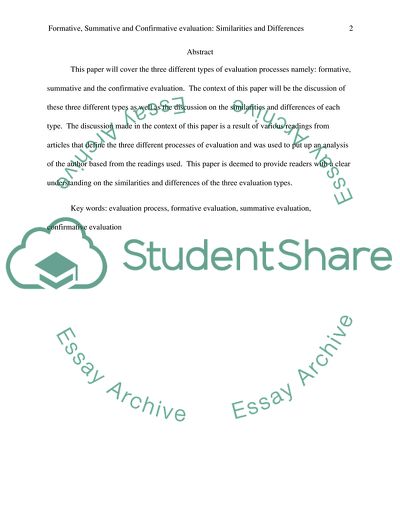Cite this document
(Formative, Summative, and Confirmative Evaluation: Similarities and Coursework Example | Topics and Well Written Essays - 1250 words, n.d.)
Formative, Summative, and Confirmative Evaluation: Similarities and Coursework Example | Topics and Well Written Essays - 1250 words. https://studentshare.org/education/1780452-comparison-and-contrast-paper
Formative, Summative, and Confirmative Evaluation: Similarities and Coursework Example | Topics and Well Written Essays - 1250 words. https://studentshare.org/education/1780452-comparison-and-contrast-paper
(Formative, Summative, and Confirmative Evaluation: Similarities and Coursework Example | Topics and Well Written Essays - 1250 Words)
Formative, Summative, and Confirmative Evaluation: Similarities and Coursework Example | Topics and Well Written Essays - 1250 Words. https://studentshare.org/education/1780452-comparison-and-contrast-paper.
Formative, Summative, and Confirmative Evaluation: Similarities and Coursework Example | Topics and Well Written Essays - 1250 Words. https://studentshare.org/education/1780452-comparison-and-contrast-paper.
“Formative, Summative, and Confirmative Evaluation: Similarities and Coursework Example | Topics and Well Written Essays - 1250 Words”. https://studentshare.org/education/1780452-comparison-and-contrast-paper.


